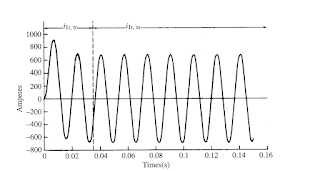Search This Blog
Thursday, August 25, 2016
Fault locating methods for High and low tension cables
Sunday, July 17, 2016
Effects of Higher and lower voltage on Induction motors
Thursday, July 7, 2016
Discovery of electricity; How electricity discovered
Now days electricity is backbone of everyone life. It seems life is
electricity. There was most often curiosity in every human being that who
discovered electricity and when. Let’s read article below to know how
electricity was discovered.
As everyone knows
electricity is nothing but source of energy. Electricity is not invented as it
is form of energy and was always present. It is only discovered and most people
think that this is discovered by Benjamin Franklin but his experiments helps in
getting a connection between lightning and electricity.
Way back in 600 BC
ancient Greeks discovered that “When we rubbing fur on amber it caused
attraction between the two” thus we can say that they have discovered static
electricity.
There are so many
discoveries has been made upto 17th century such as:-
1. Invention of electrostatic generator
2. Difference between positive and negative currents
3. Classification of materials as conductors or insulators.
William Gilbert:-
In 1600 year, William
Gilbert describe that when force which some substances exert when rubbed
against each other is known as”electicus”.
Thomas Browne:-
Thomas Browne describe
the word “electricity” In his several books. His investihgations were based on
William Gilbert work.
Ben Franklin:-
A well-known experiment was done by Ben Franklin, In 1752, with
a kite, a key, and a storm. Electricity from the storm clouds transferred to the kite key and electricity flowed
down the string and gave him a shock. Luckily he get escaped unhurt so by this
he proved his idea.
Through this experiment he proved that lightning and electric
sparks are same thing.
Alessandro Volta
Volta was an Italian
physicist. He discovered that a particular chemical reaction produces
electricity. In 1800 he constructed the voltaic pile, which was an electric
battery, that produced a steady electric current also called as DC battery.
Volta also created the first transmission of electricity by linking
positively-charged and negatively-charged connectors and driving an electrical
charge, or voltage, through them.
Michael Faraday:-
Everyone know Faraday
efforts for electricity generation. In year 1831 Michael Faraday make
electricity use viable by creating the electric dynamo . Faraday’s uses a
magnet that was moved inside a coil of copper wire, creating a tiny electric
current that flowed through the wire.
Faraday also stated
Law of electromagnetic Induction for production of electricity which is basis
of today electricity generation.
In 1878 American Thomas Edison and British
scientist Joseph Swan invented the incandescent filament light bulb in their
respective countries.
In 1882 Edison used his direct-current system
(DC) to provide power to illuminate the first New York electric street lamp.
In Late 1800’s and
early 1900’s inventor Nikola
Tesla became an important contributor to the birth of commercial electricity.
He also worked with Edison. Tesla had many revolutionary developments in
(i) Electromagnetism,
(ii) Invention of radio
(iii) AC motors
(iv) Polyphase distribution system.
There are many other
inventors which played an important part in field of electricity.
(a) James
Watt
(b) Andre
Ampere
(c) George
Ohm.
So it is unfair to name a single man for discoveries and
inventions in field of electricity. They have all made great contributions in
field of electricity through which we have such a great electricity system.
In 1936 it has been found
that ancient peoples have also experimented
with electricity, too. In 1936, a clay pot was discovered that suggests that the first batteries
may have been invented over 2,000 years ago. The clay pot contained copperplates, tin alloy, and an iron rod.
It could have been used to create an electric current by filling
it with an acidic solution, like vinegar. No one knows what the device was used for,
but it sheds some light on the fact that people may have been learning about
electricity long before Benjamin Franklin!
For generating electricity from fruits and vegetables visit link:-
http://electrialstandards.blogspot.in/2016/09/electricity-from-pototes-and-other.html
Saturday, June 18, 2016
Locked rotor current calculations
Let’s take an example of motor having motor rating of 30 HP and rated current of 34.9A. With code letter of G. Now lets calculate the locked rotor current of the motor.




